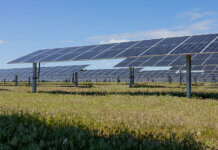Georgia Power, the largest electric subsidiary of Southern Co., has received approval from the Georgia Public Service Commission (PSC) for its 2019 integrated resource plan (IRP), which includes energy storage and 72% more renewable generation by 2024.
Under the approved IRP, Georgia Power plans to do as follows:
- Own and operate 80 MW of battery energy storage systems. Battery energy storage systems – critical to growing and maximizing the value of renewable energy – will allow the company to demonstrate the deployment, integration and operation of storage to gain insight into how to maximize the value of storage for customers.
- Add 2,260 MW of new renewable – solar, wind or biomass – generation to the company’s energy mix. With this addition, Georgia Power will grow its renewable generation by more than 72% to 5,390 MW by 2024 and increase the company’s total renewable capacity to 22% of its portfolio. (Georgia Power notes that it purchases only the null energy output from some renewable generating facilities that have contracted to sell that energy to the company. Ownership of the associated renewable energy credits is specified in each respective power purchase agreement. The party that owns the RECs retains the right to use them.)
- Continue making capital investments to ensure high reliability of the system and help ensure the company meets all state and federal environmental compliance regulations. Georgia Power will move forward with five hydro investment projects, including projects at the Terrora, Tugalo, Bartletts Ferry, Nacoochee and Oliver generating facilities. The company will also continue its environmental compliance strategy, which includes plans to close all 29 ash ponds while protecting water quality and complying with state and federal requirements.
- Retire five coal-fired units – four at Plant Hammond near Rome, Ga., and one at Plant McIntosh near Rincon, Ga. – reducing the company’s coal-fired generation capacity to approximately half of what it was in 2005. The company also will not renew its operating licenses for the Estatoah, Langdale and Riverview hydro dams.
The plan also includes energy efficiency targets 15% more than those approved in previous IRPs and adds new energy-saving programs for both residential and commercial customers.
“Working with the Georgia PSC, we are positioning Georgia as a leader in the Southeast in battery energy storage, which is critical to growing and maximizing the value of renewable energy for customers as we increase our renewable generation by 72 percent by 2024,” says Allen Reaves, Georgia Power’s senior vice president and senior production officer. “Through the IRP process, Georgia Power will continue to invest in a diverse energy portfolio, including the development of renewable resources in a way that benefits all customers to deliver clean, safe, reliable energy at rates that are well below the national average.”
According to the Sierra Club, the plan calls for adding 2 GW of solar resources, which is enough to power more than 200,000 homes, but the group contends that Georgia Power should add even more.
“Our expectations for Georgia Power are much higher than what’s in this final plan. Although this result is more than the company first proposed, it’s still much less than Georgia needs,” says Stephen Stetson, senior representative for the Sierra Club’s Beyond Coal campaign in Georgia.
“Throughout the hearing process, we heard credible expert testimony push for double, triple, even 10 times the amount of solar proposed in this plan. It’s disappointing to see Georgia Power stagnate on Georgia’s booming solar potential,” he continues.
“And even with the smart – and overdue – coal retirements at Plants Hammond and McIntosh, this plan is still far too slow in getting rid of dirty power plants. Phasing out coal at places like Plant Bowen or Plant Wansley would have put additional downward pressure on rates for people across Georgia and would help us to cut off the source of air emissions and toxic coal ash. We don’t need coal to generate safe, clean, affordable and reliable electricity.
“Although we aren’t satisfied with the results of this planning process,” Stetson concludes, “we appreciate the leadership of the PSC in advancing the ball for clean energy – and we’ll keep pushing for ambitious action to move away from dirty, dangerous, outdated energy sources and toward plans that prioritize equitable energy efficiency programs and a 100 percent clean energy grid that protects our air and water, creates good local jobs, and keeps bills low for families and businesses.”




